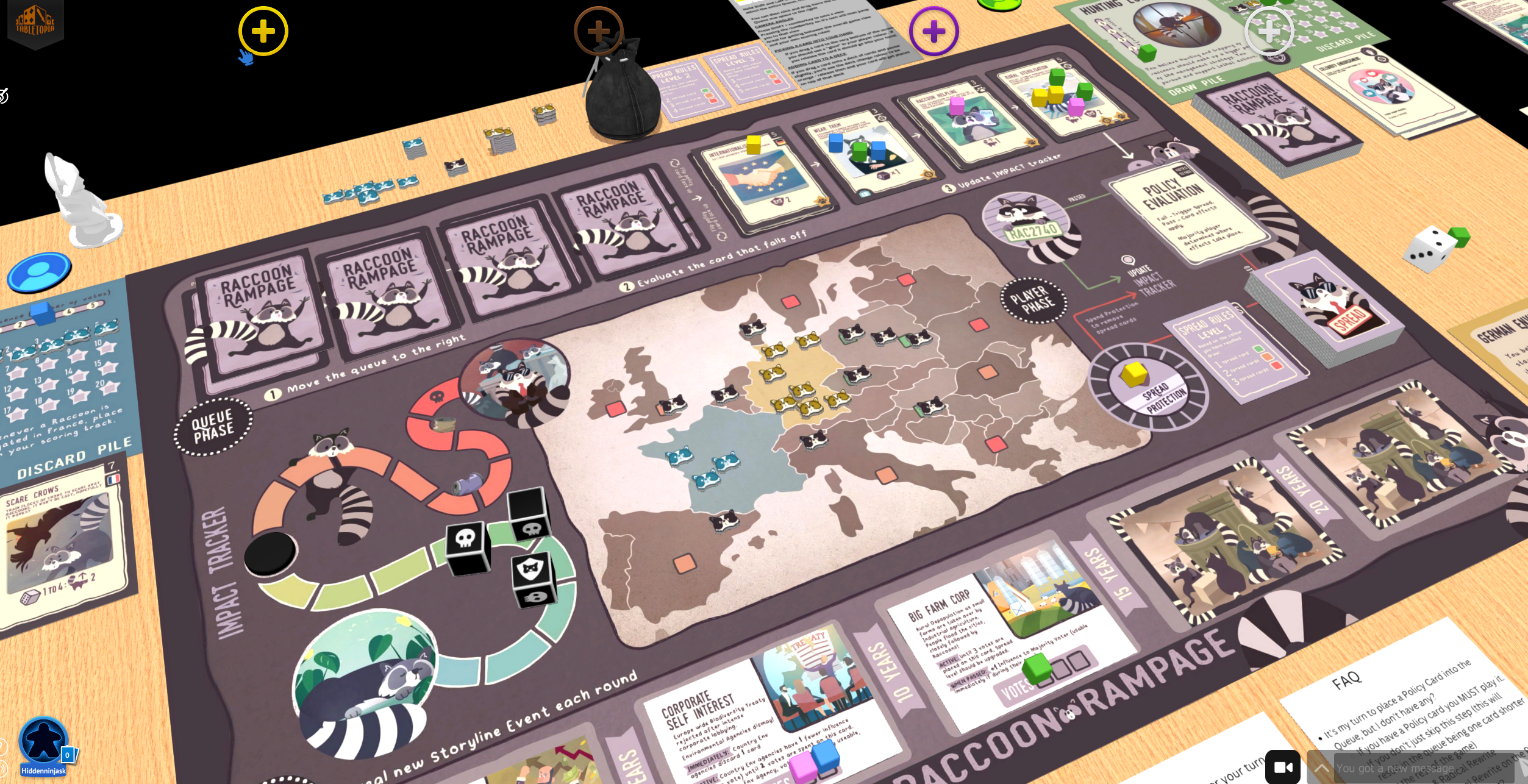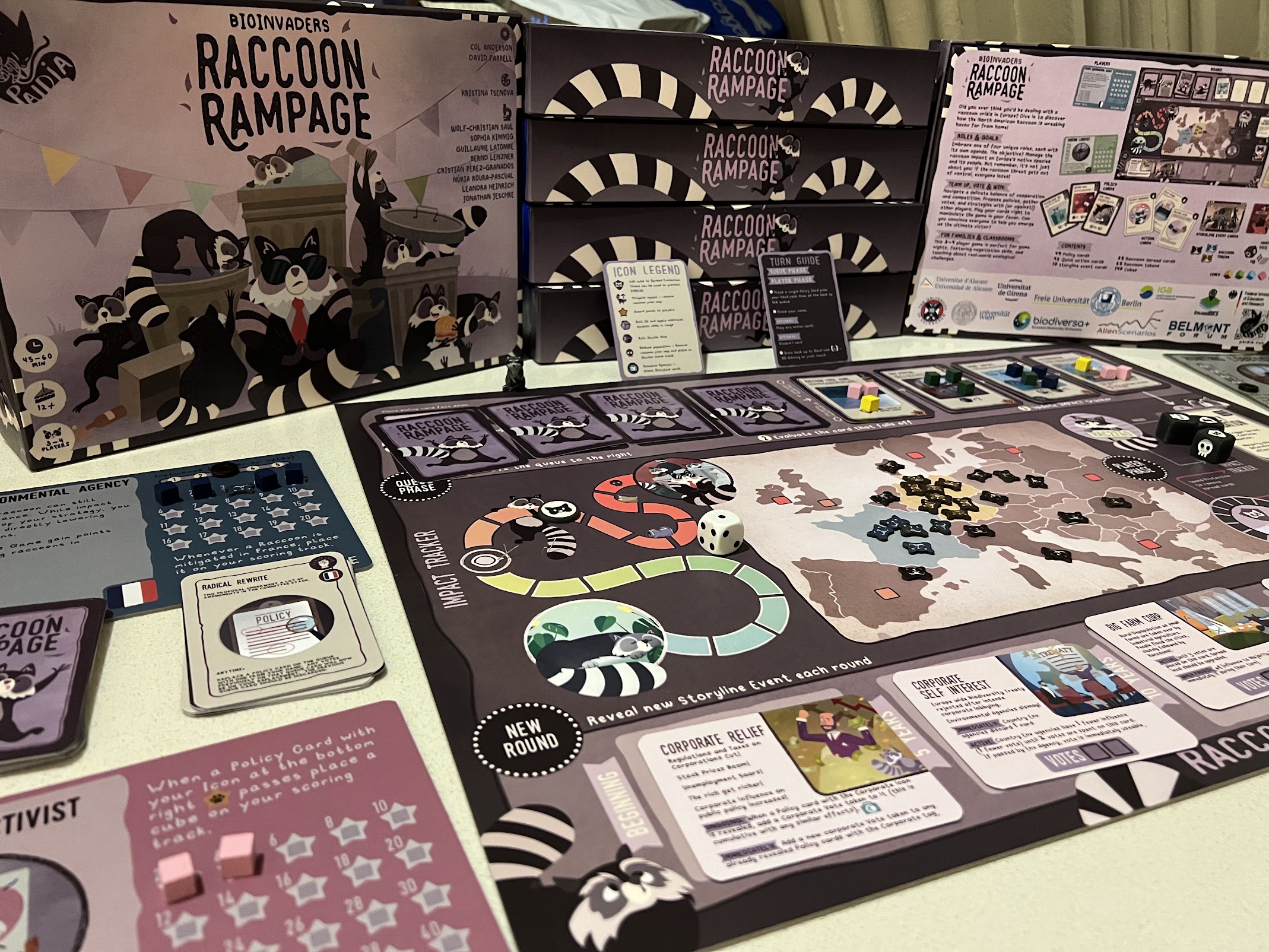
Raccoon Rampage is a semi-cooperative game where players work together to stop raccoons from spreading further within Europe and destroying all of our stuff.
It features a mix of strategic planning and social negotiation. You pick policies to put into a queue, vote on policies in the queue, and dabble in chaos using action cards that manipulate things in your favour.
What’s unique about the experience is that yes you have to work together. But you also want to beat everyone else!
Like Pandemic, you’ll work with other players to stop the spread of a (raccoon) invasion. But unlike Pandemic you individually want to win. This means a lot of backstabbing that can lead to everyone failing, but if you play too nice… you’re not going to win!
Key features:
- ages 12+
- 3 or 4 player
- 45 - 60 mins
- over 160 beautiful cards
- four storylines (that can be mashed up)
- a large game board
- four unique player roles, each with a unique deck and player mat
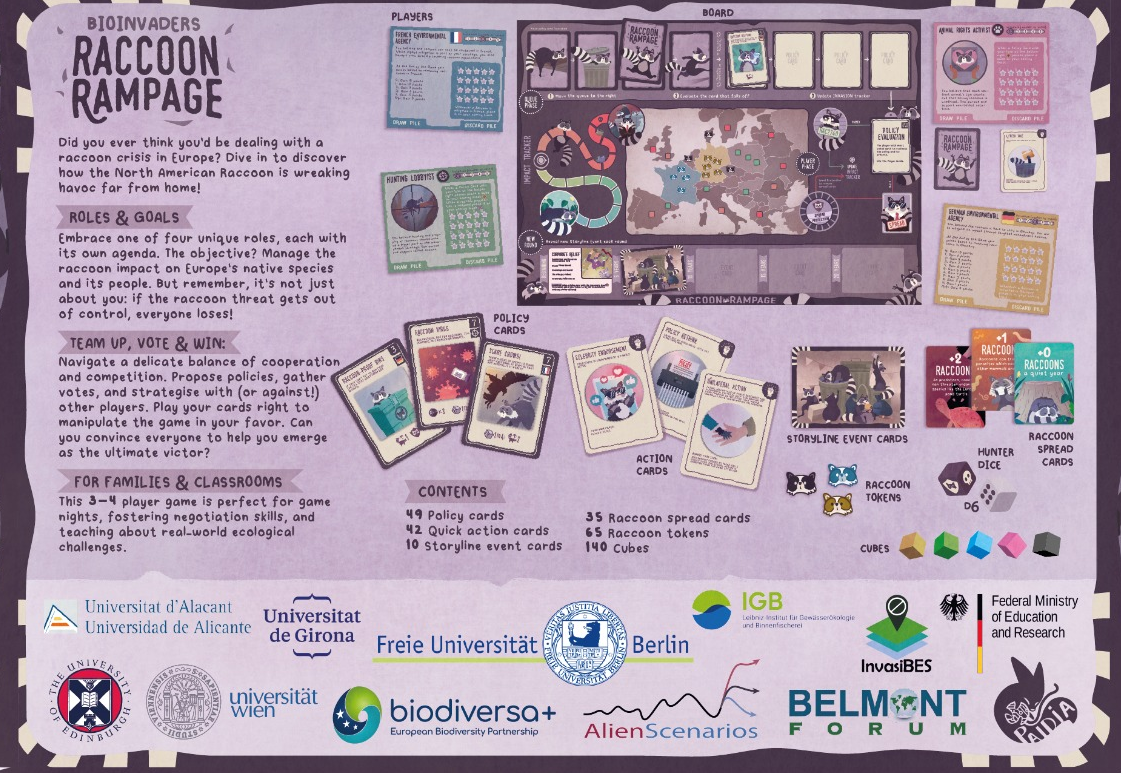
Four player decks made of policy and action cards
Each unique deck is a mix of policy and action cards. On your turn, put a policy card into a queue that you and the other players can vote on. If a card gets enough votes, we move towards victory as a group but of course, each player wants their policies to win so they might not vote for you.
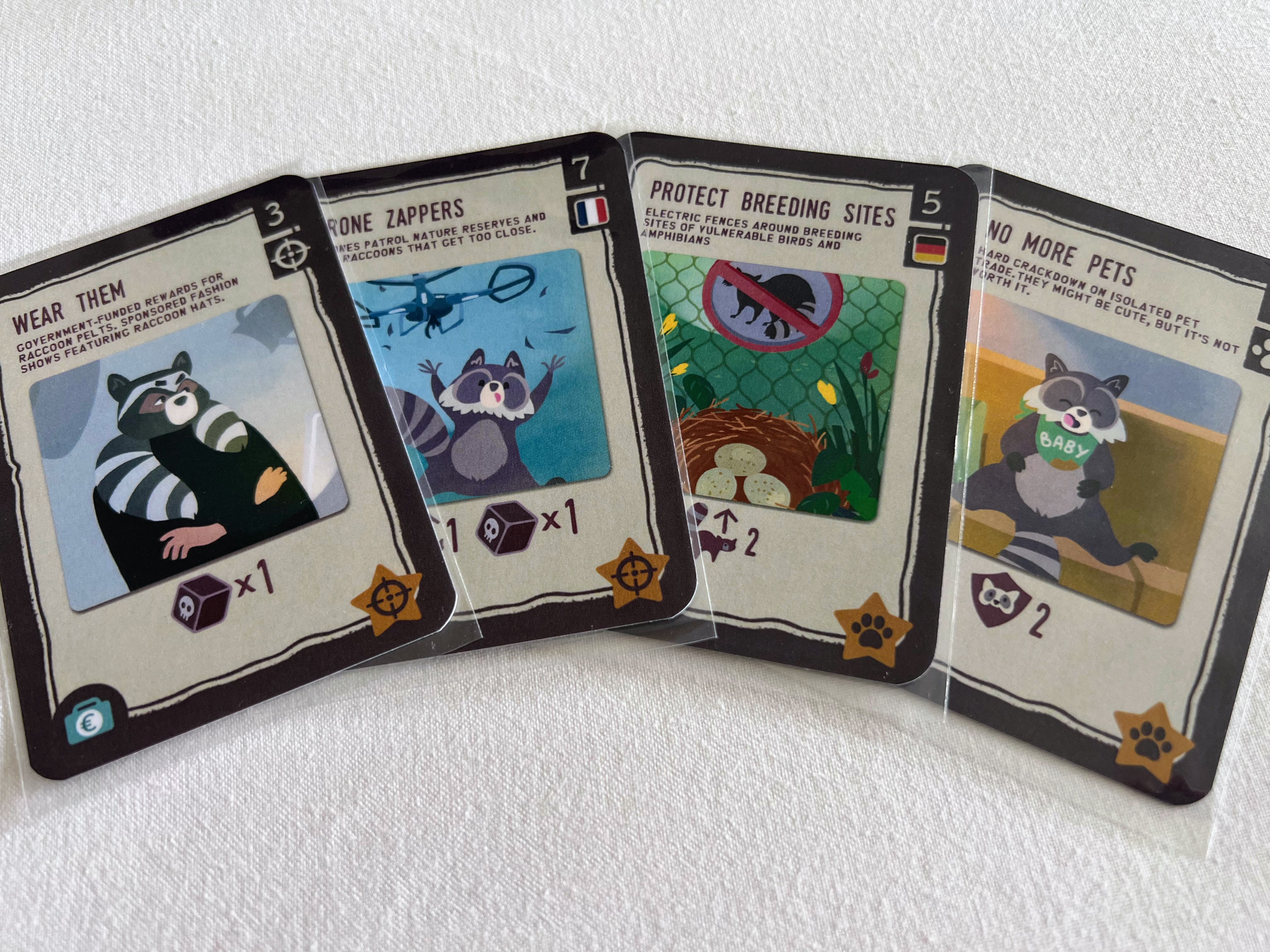 Each deck has a mix of standard and unique policy cards (black border).
Each deck has a mix of standard and unique policy cards (black border).
Action cards let you mess with other players. Whether it’s stealing votes, swapping policies or manipulating the results of a vote, strategic decisions on when to play these powerful cards is crucial for success.
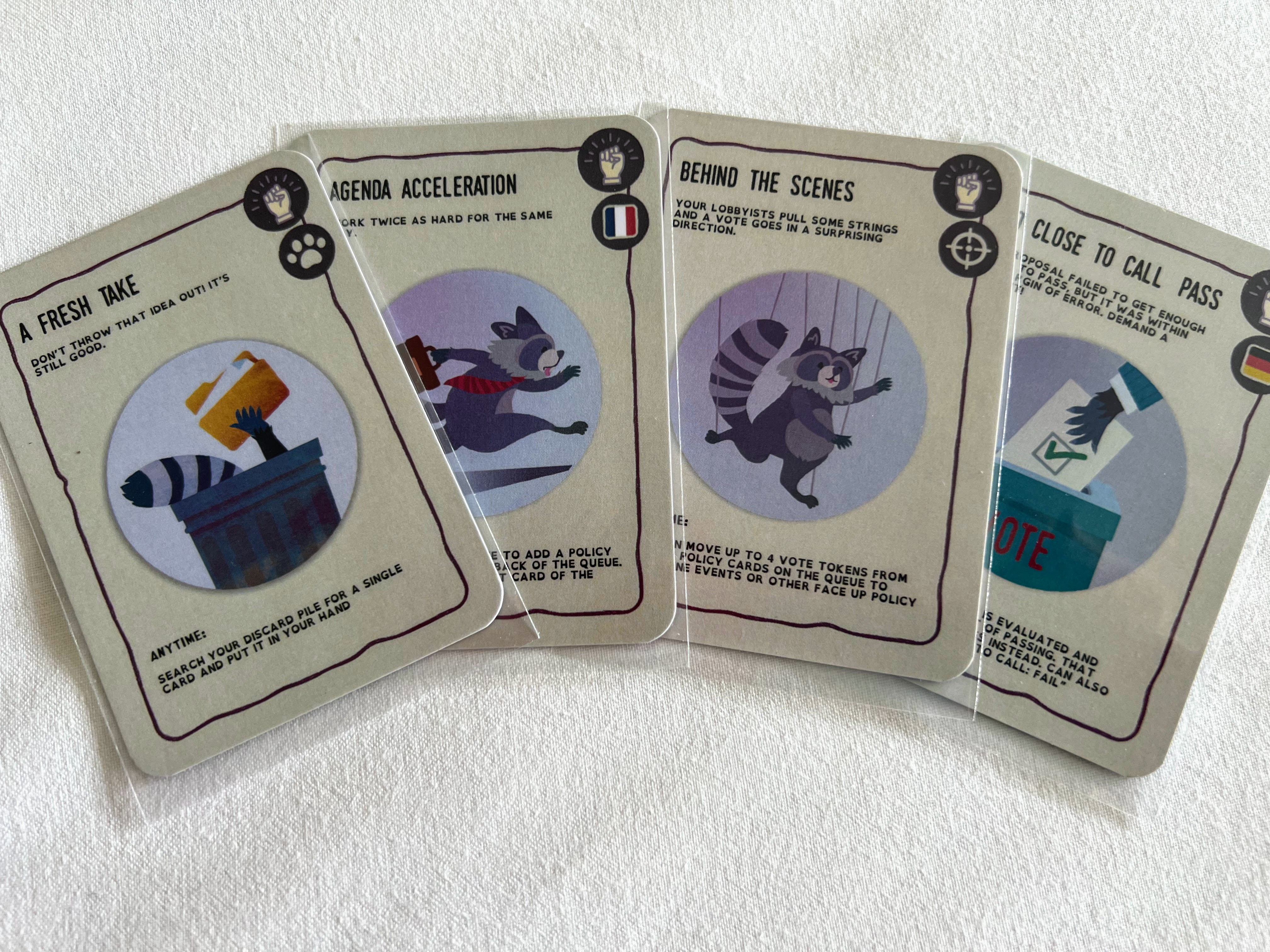 Each deck also has a mix of standard and unique action cards (white border).
Each deck also has a mix of standard and unique action cards (white border).
Four storylines that can be mashed up for variations
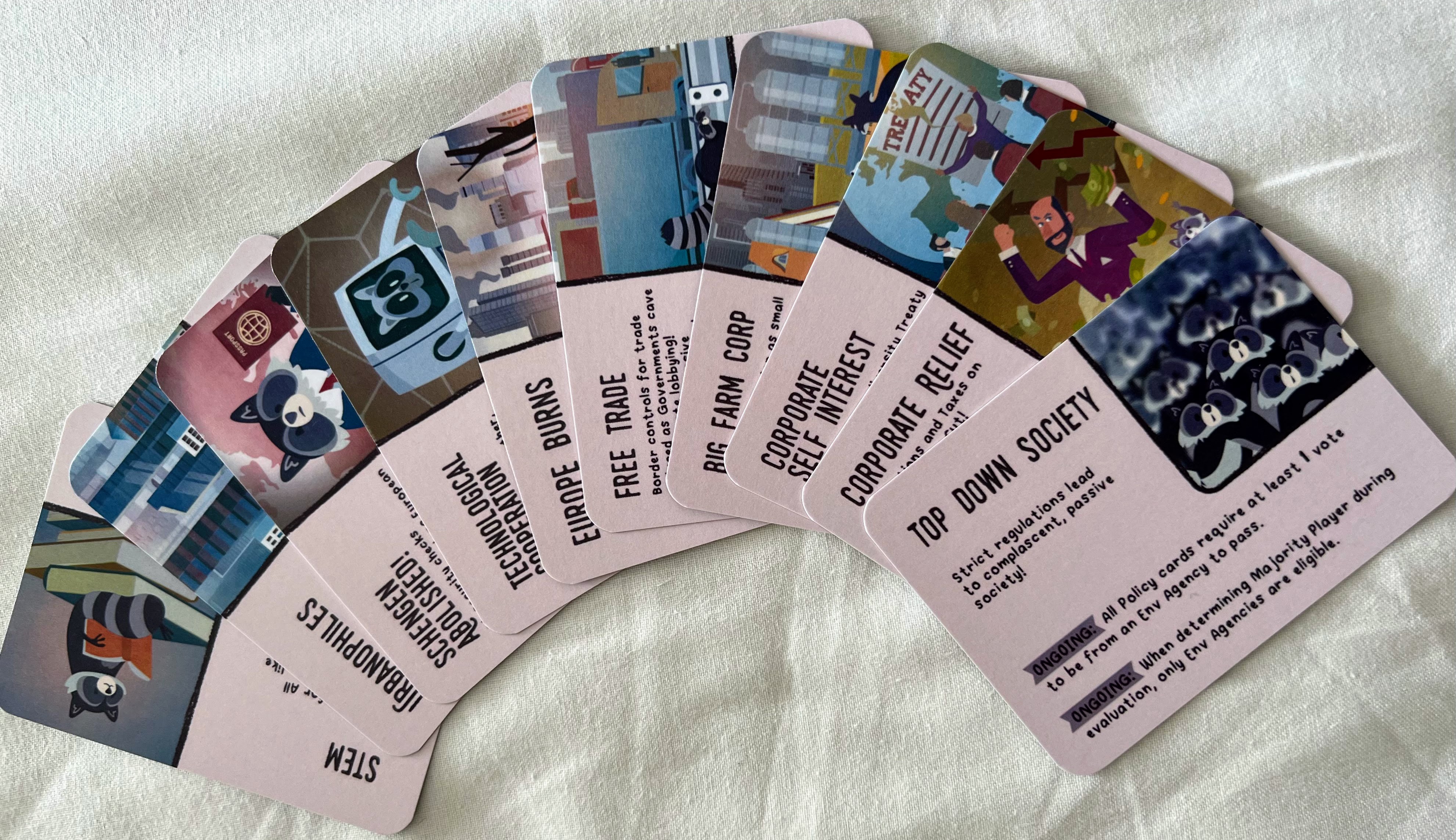 Every round a new story card is flipped. These story cards put pressure on players to work together and put their personal goals in conflict with the group mission. Every vote counts - do we act on the story event for immediate benefit? Or do we instead invest in longer term goals?
Every round a new story card is flipped. These story cards put pressure on players to work together and put their personal goals in conflict with the group mission. Every vote counts - do we act on the story event for immediate benefit? Or do we instead invest in longer term goals?

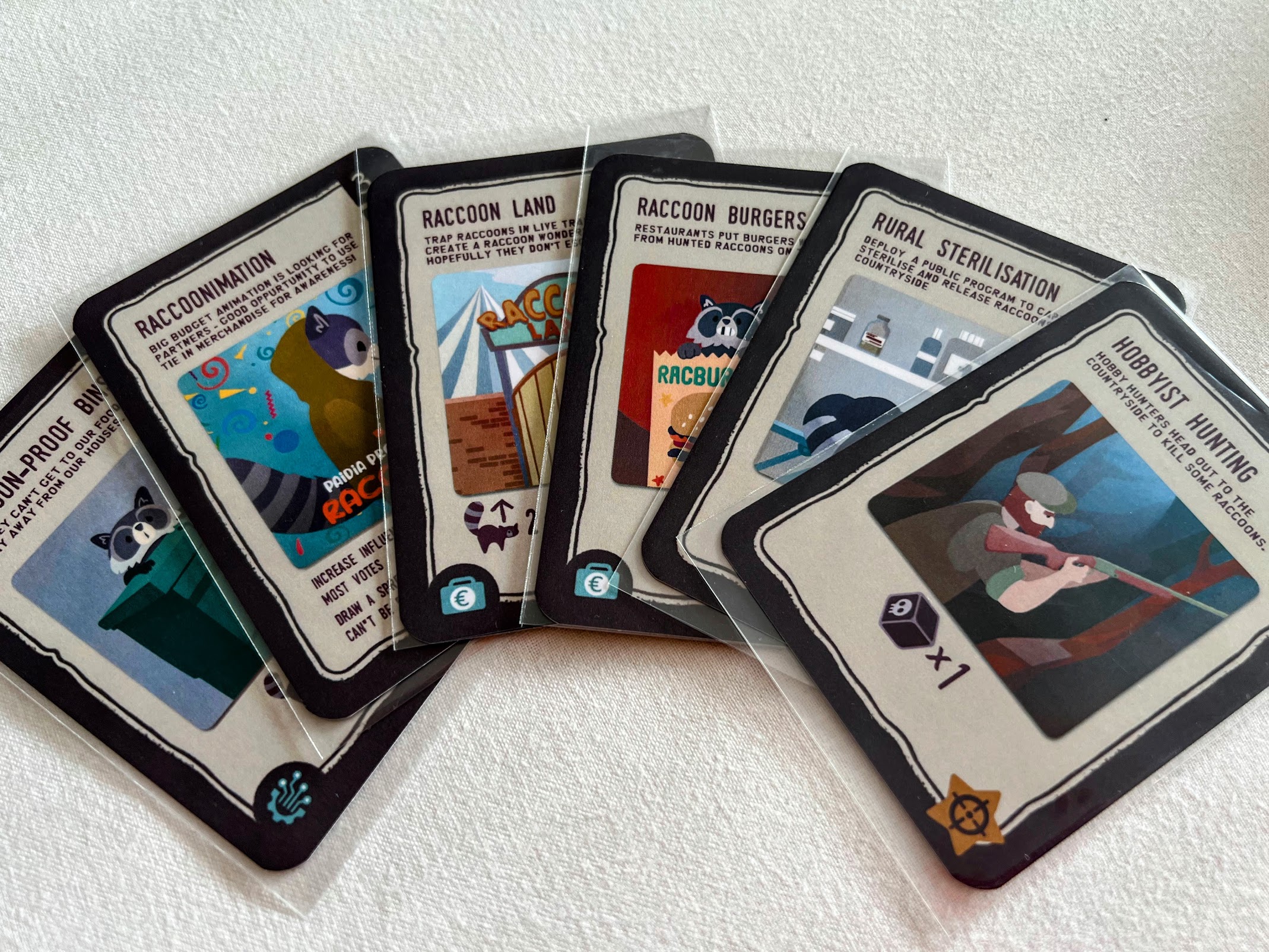
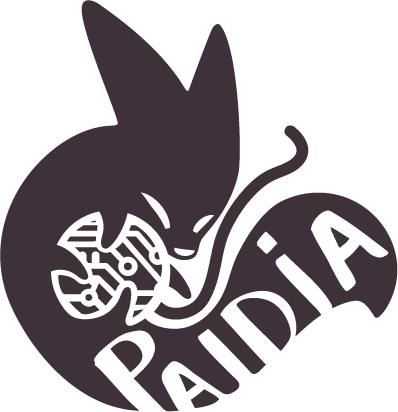


 Each deck has a mix of standard and unique policy cards (black border).
Each deck has a mix of standard and unique policy cards (black border). Each deck also has a mix of standard and unique action cards (white border).
Each deck also has a mix of standard and unique action cards (white border). Every round a new story card is flipped. These story cards put pressure on players to work together and put their personal goals in conflict with the group mission. Every vote counts - do we act on the story event for immediate benefit? Or do we instead invest in longer term goals?
Every round a new story card is flipped. These story cards put pressure on players to work together and put their personal goals in conflict with the group mission. Every vote counts - do we act on the story event for immediate benefit? Or do we instead invest in longer term goals?